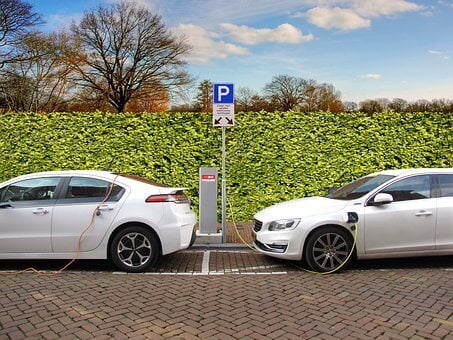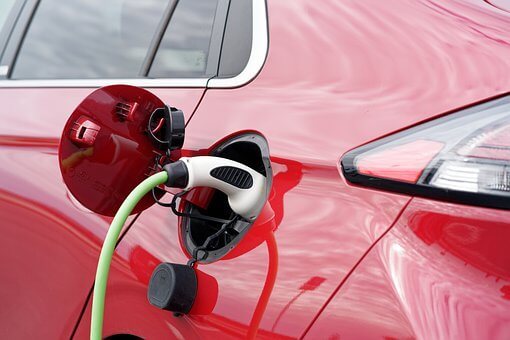Different Varieties of Electric Vehicles There are different varieties of Electric vehicles, which include all ranges of Battery electric vehicles to
Different Varieties of Electric Vehicles
There are different varieties of Electric vehicles, which include all ranges of Battery electric vehicles to gasoline-reliant Hybrid electric vehicles, having multiple different features and advanced technology in them. Hybrid electric vehicles depend on gasoline-powered generators and also fuel cells to provide electric power to the vehicle, but BEV or battery electric vehicles only rely on battery power banks for complete operation.
The basic difference between battery electric vehicles and gasoline-powered vehicle is that BEV has an electric motor to drive the vehicle and gasoline-dependent vehicles include an Internal combustion engine. In general, electric power is the basic demand of every vehicle for its operation mode, and battery-powered vehicles have now become more efficient, eco friendly, and economically it’s the best choice of the latest era due to gasoline prices hikes.

Categories of EVs:
Electric vehicles are breakdown into Four categories.
EV(Electric vehicles)/BEV(Battery Electric vehicles)
BEVs are pure forms of electric vehicles, this advanced technology vehicle includes a battery bank that is rechargeable, an electric power motor that drives the vehicle, and is sourced by battery bank power. These vehicles can be charged at home or at the supercharging station which is now deployed by TESLA in the united states of America.
HEV:
It includes ICE(internal combustion engine) and an electric motor. There are different varieties of hybrid electric vehicles in the market, but initially hybrid electric vehicles start off with a motor and then after picking a certain speed limit shift to the combustion engine. One more thing is that HEVs are not charged by charging stations, batteries in HEVs are charged by a gas engine and also by regenerative braking systems.
PHEV:
Plug-in hybrid vehicles are split into two categories, parallel and series. PHEVs are the advanced form of HRVs. In these vehicles, both the internal combustion engine and the motor have the capability of working together as well as working separately. In parallel PHEVs motor and ICE working parallel but in series PHEVs gas-powered generator and motor are in series when motor gets less power from battery packs the ICE supports the PHEV.

Fuel cell Electric vehicles:
This technology is the most eco-friendly and it utilized hydrogen gas cylinders which are inserted in cars then this hydrogen reacts with oxygen and electric power is produced which then powers up the electric motor for driving FCEV(Fuel cell electric vehicle). These vehicles are rare on the roads due to the unavailability of hydrogen gas stations but now worldwide wide governments are focusing on the large-scale production of hydrogen gas to scale up the production of FCEVs.
Why Are There So Many Types of Electric Vehicles?
Actually, EVs technology has been existed for around two hundred years, but now its slogan raised up approximately for two decades because its efficiency is increased that batteries are not much efficient, motors don’t have many features to bear the torque load, and the main thing is a range which is very low.
Due to price hikes of gasoline and the symptom of environmental damages and raising up of air pollutants, every country focuses on the research and development of EVs and tried very much to make it more efficient and now one charge of EVs cover the milage up to 400 to 500 miles, it’s the greatest achievement in the automotive sector and now EVs are selling like hotcakes.
The maintenance factor is also the biggest factor of the transformation from ICE based vehicles to EVs, ICE engines demand too much cost for monthly maintenance and also they are not environmentally friendly, they cause illness in the air which causes smog and respiratory fatal diseases but EVs are clean and soundless and now becomes more efficient the gasoline-powered vehicles. HEVs, PHEVs, and FCEVs are the technology used between gasoline-powered vehicles and battery power vehicles its only purpose is to fill the gap, but now EVs made themselves too much efficient that it is independent of other existing technology and very soon EVs are adopted by all.
Electric Vehicles Comparision with HEVs, PHEVs, and FCEVs.
Battery electric vehicles
Its power source is Batteries (charged at home or charging stations), it doesn’t include an internal combustion engine or generator, no carbon Emissions, All-electric range Up to 400+ miles, it can operate in all-electric mode, it has the feature of Regenerative braking, its Battery capacity is 16-100 kWh, its price range is from $30,000 – $187,000.
Fuel cell electric vehicles
Its power source is Hydrogen fuel (only available in limited California markets), it doesn’t include an internal combustion engine or generator, no carbon Emissions only emits water, All-electric range Up to 366 miles ^2, it can operate in all-electric mode, it has the feature of Regenerative braking, its Battery capacity is 10-17 kWh ^5, its price range is from $50,000 – $60,000.
Hybrid electric vehicles
Its power source is Primarily gasoline, it Includes an internal combustion engine or generator, it has carbon Emissions of 0-50 lbs of CO per 100 miles ^1, All-electric range 0-50 miles, it can operate in all-electric and mechanical mode, it has the feature of Regenerative braking, its Battery capacity is 0.65 – 1.8 kWh, its price range is from $23,000 – $200,000.
Plug-in Hybrid electric vehicles
Its power source is Gasoline, batteries (charged at home or charging stations), it Includes an internal combustion engine or generator, it has carbon Emissions of 0-50 lbs of CO per 100 miles ^1, All-electric range 10-50 miles, it can operate in all-electric mode, it has the feature of Regenerative braking, its Battery capacity is 4.4 – 34 kWh, its price range is from $26,000 – $200,000.
Extended range hybrid electric vehicles
Its power source is Gasoline, batteries (charged at home or charging stations), it Includes an internal combustion engine or generator, it has carbon Emissions of 0-50 lbs of CO per 100 miles ^1, All-electric range 10-80 miles, it can operate in all-electric mode, it has the feature of Regenerative braking, its Battery capacity is Up to 32 kWh, its price range is from $40,000 – $50,000.
